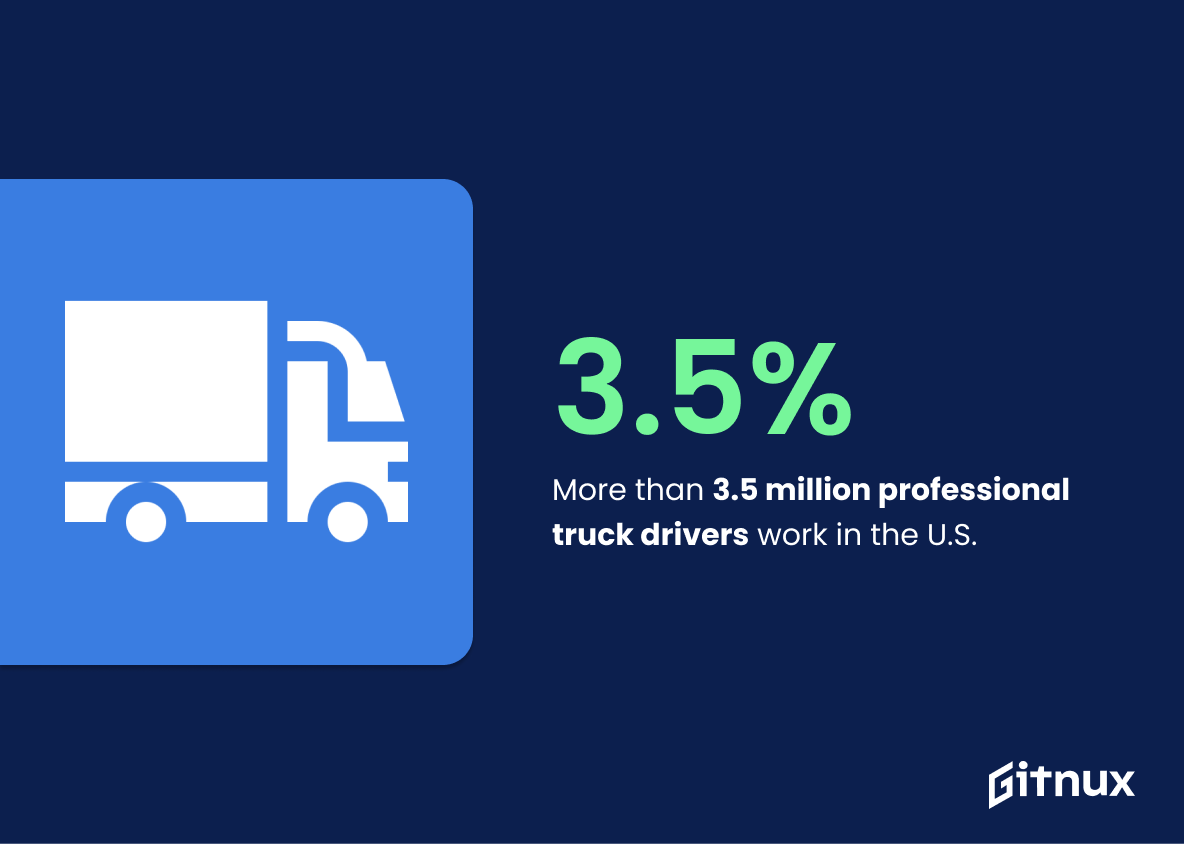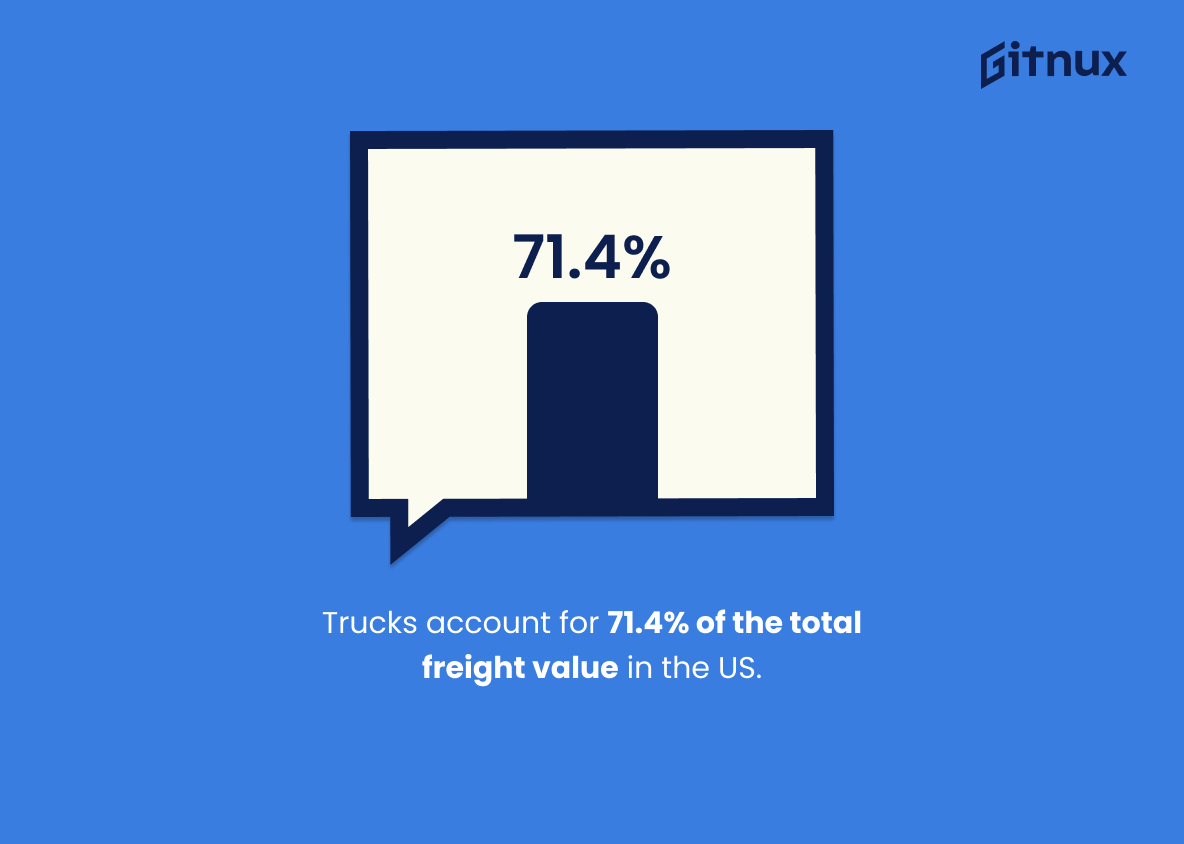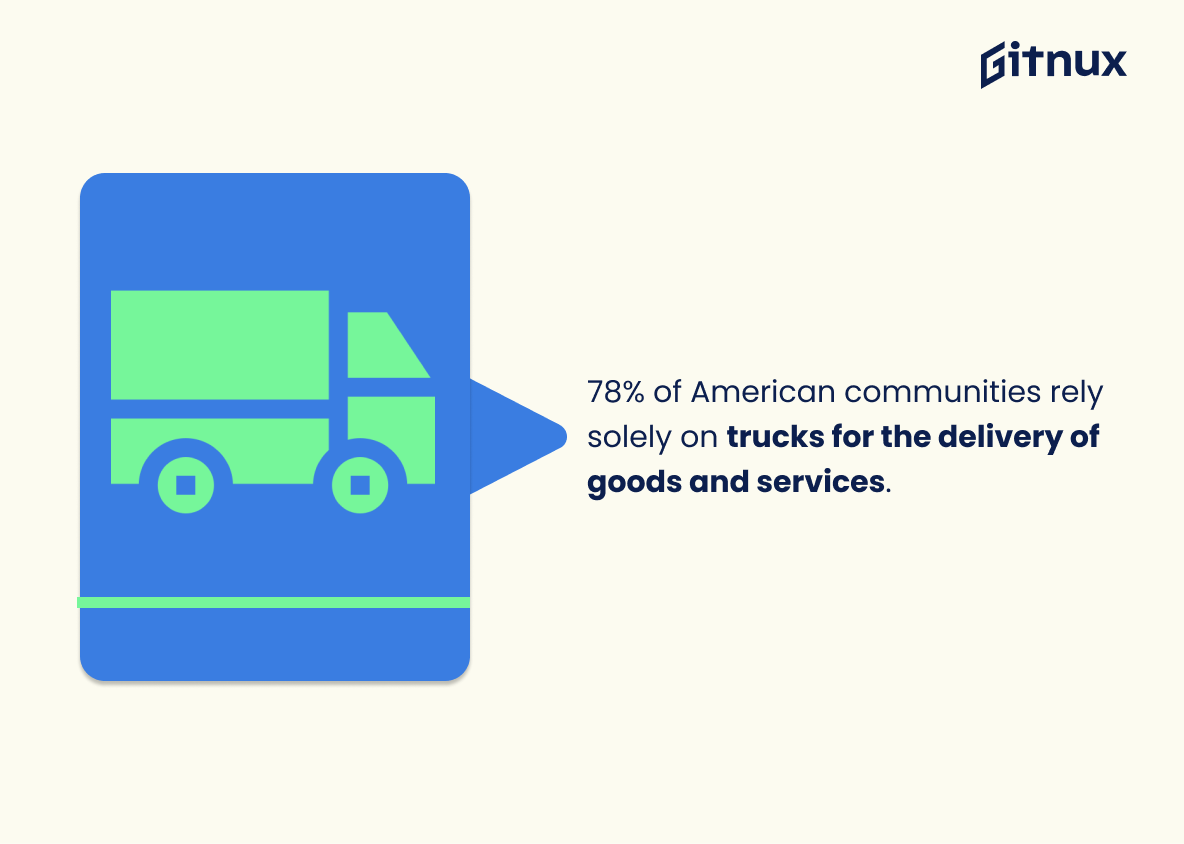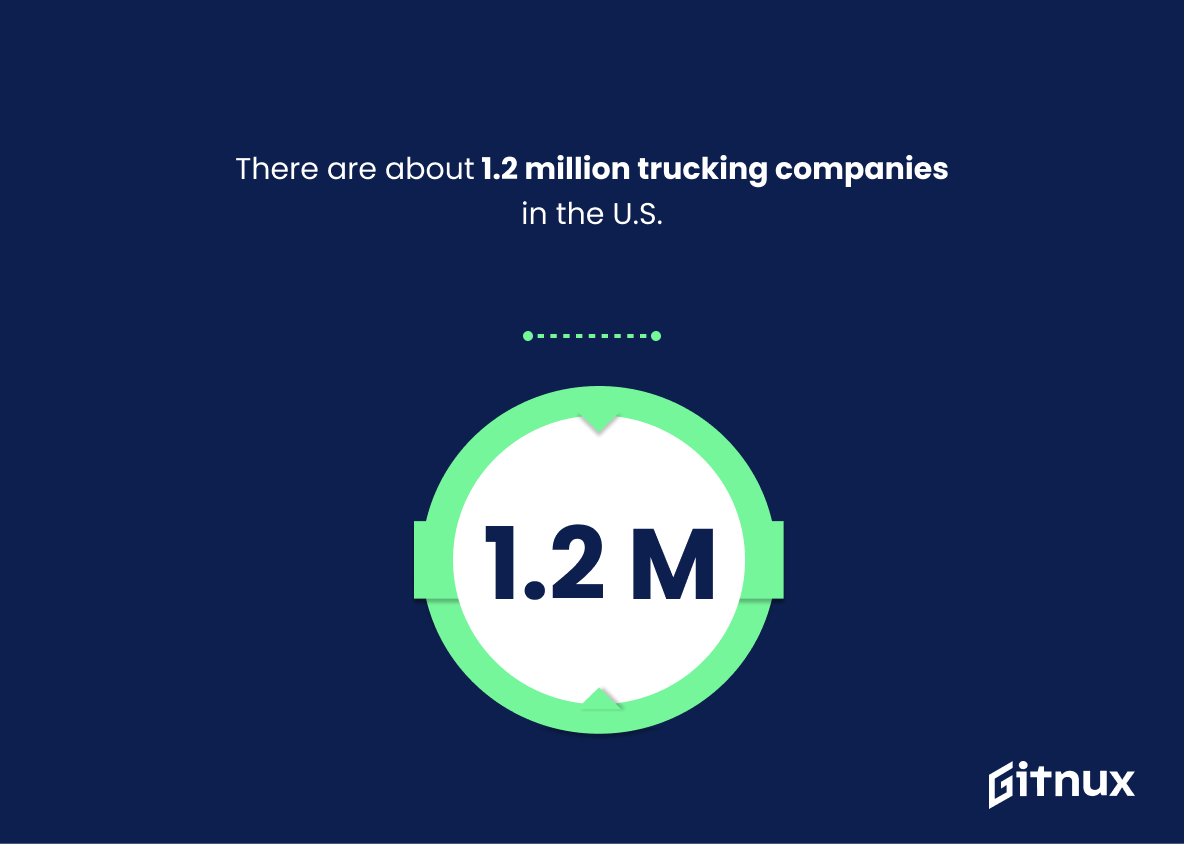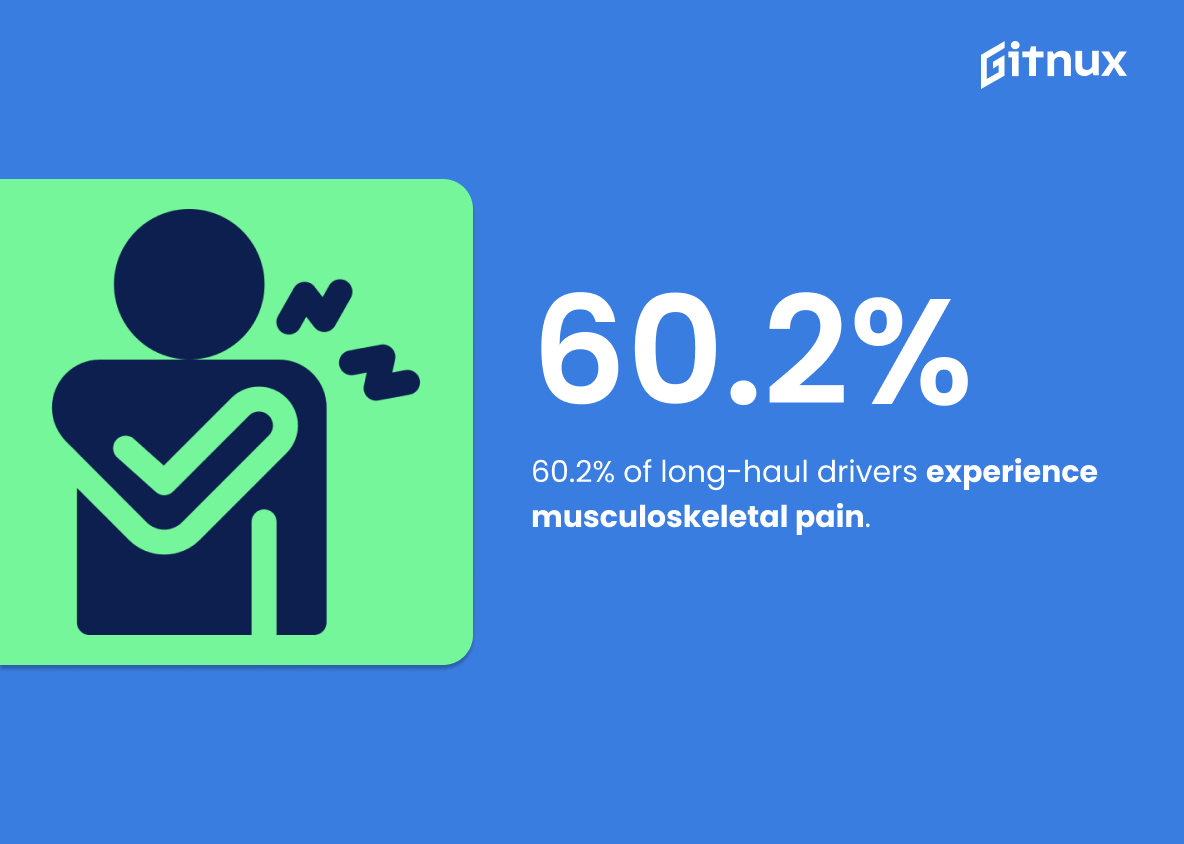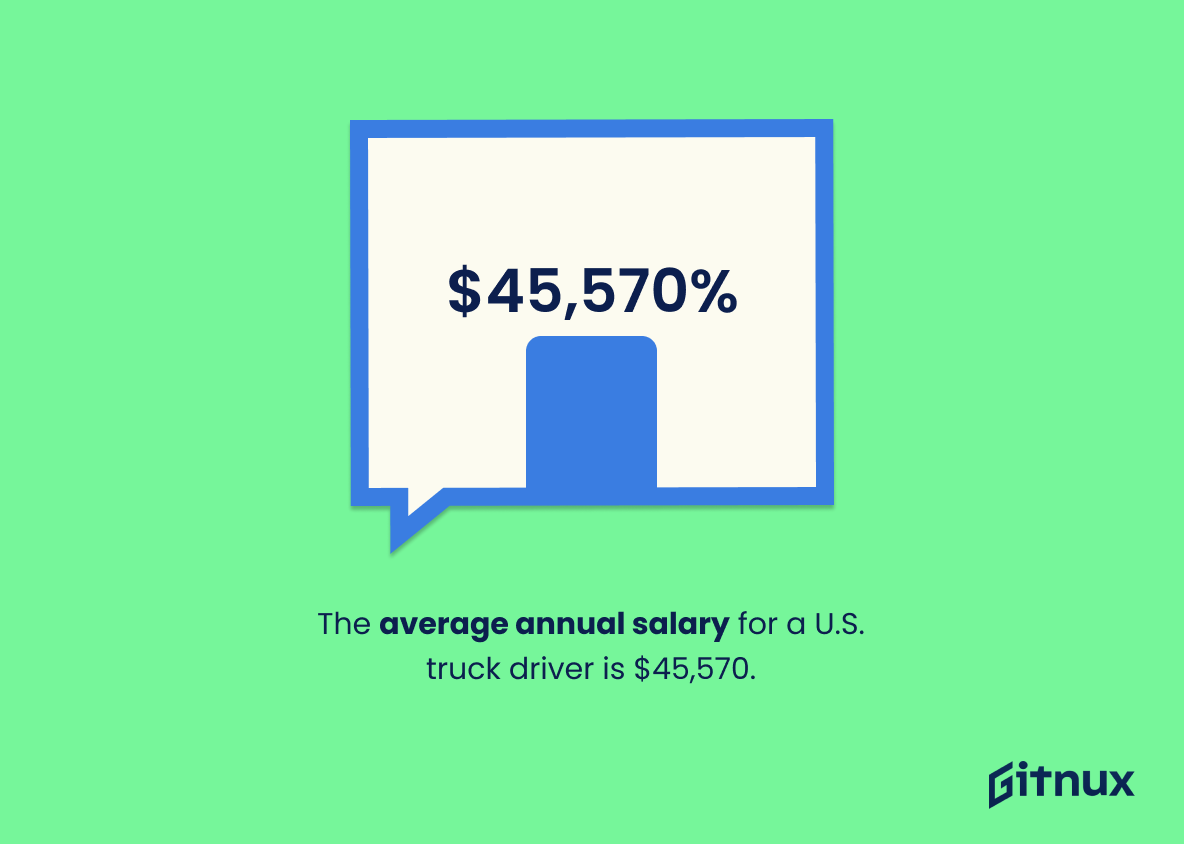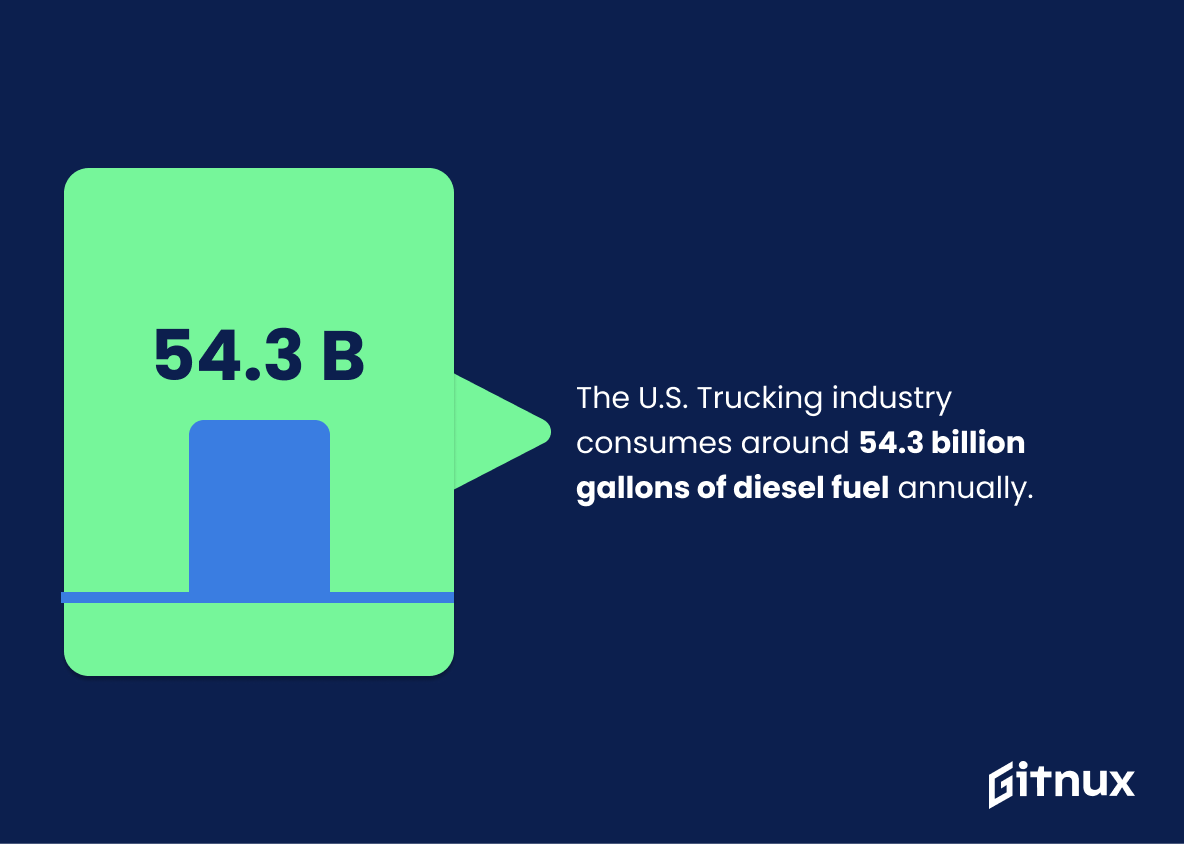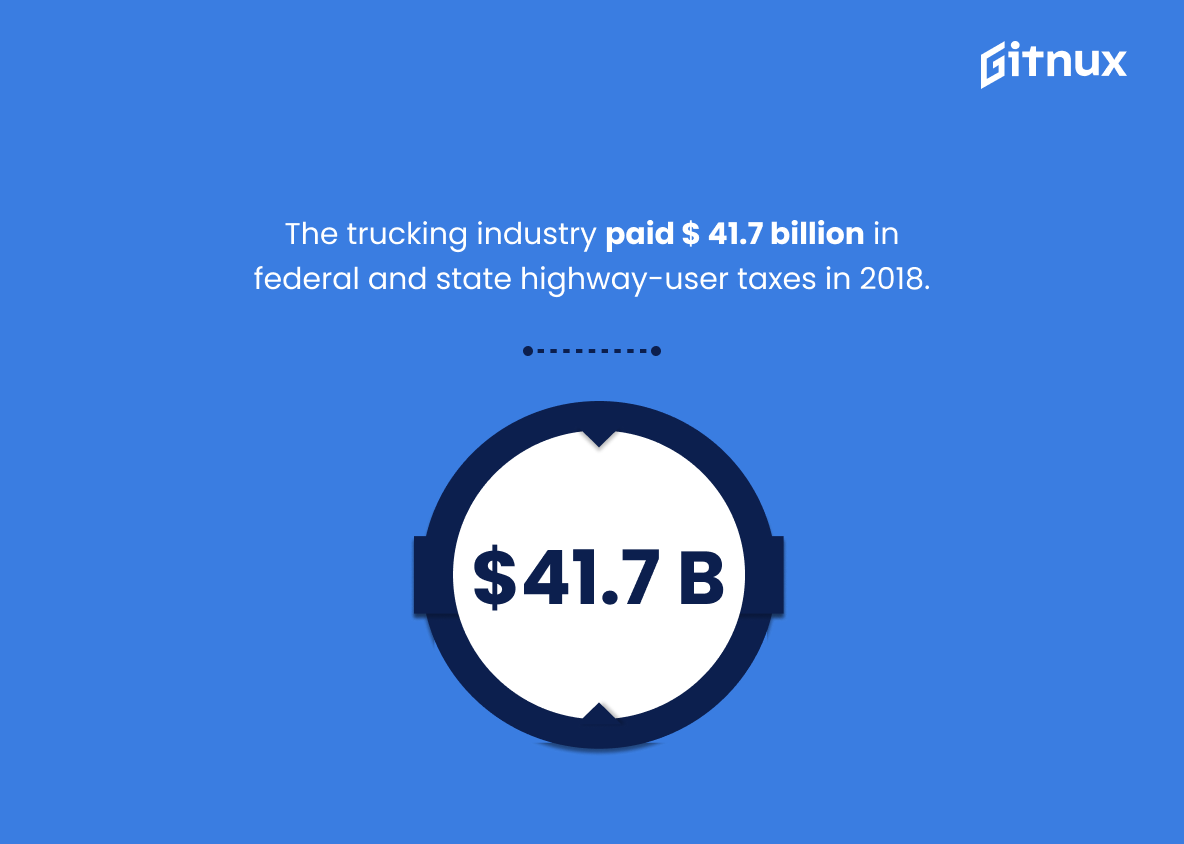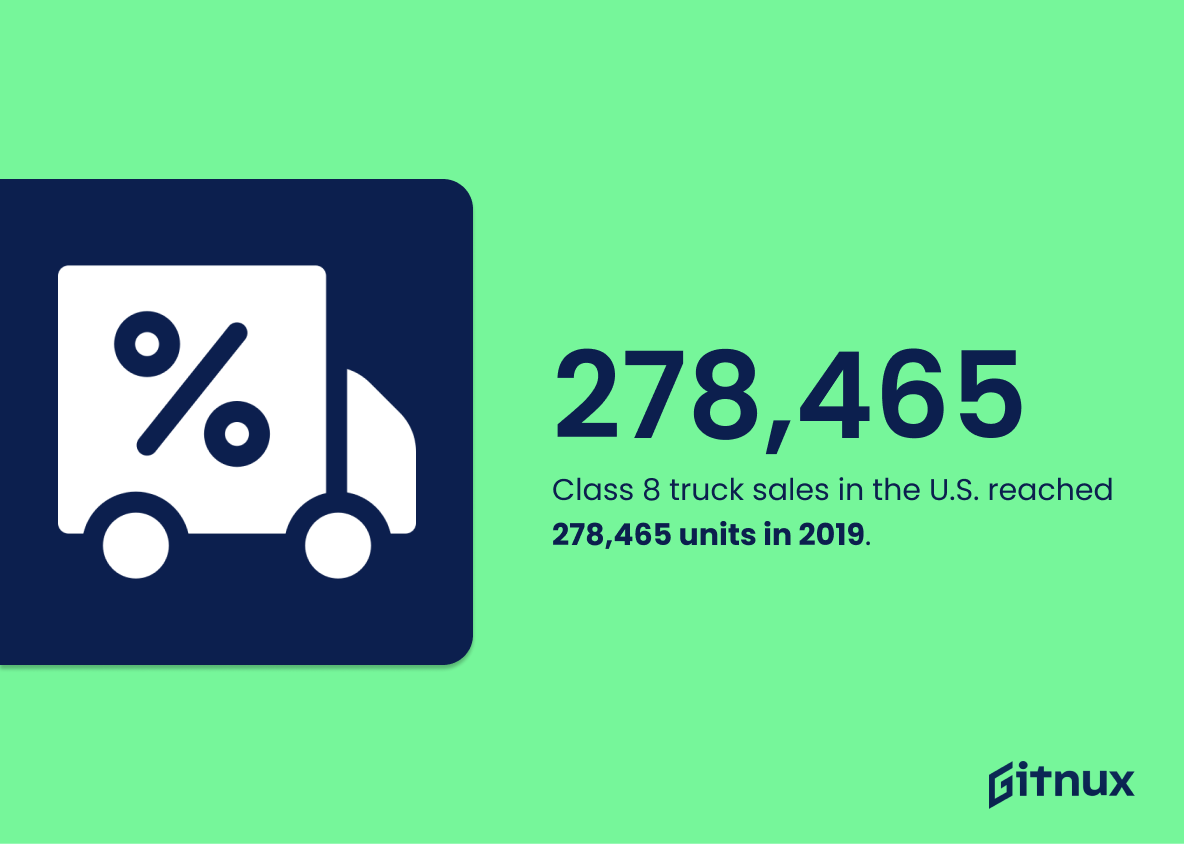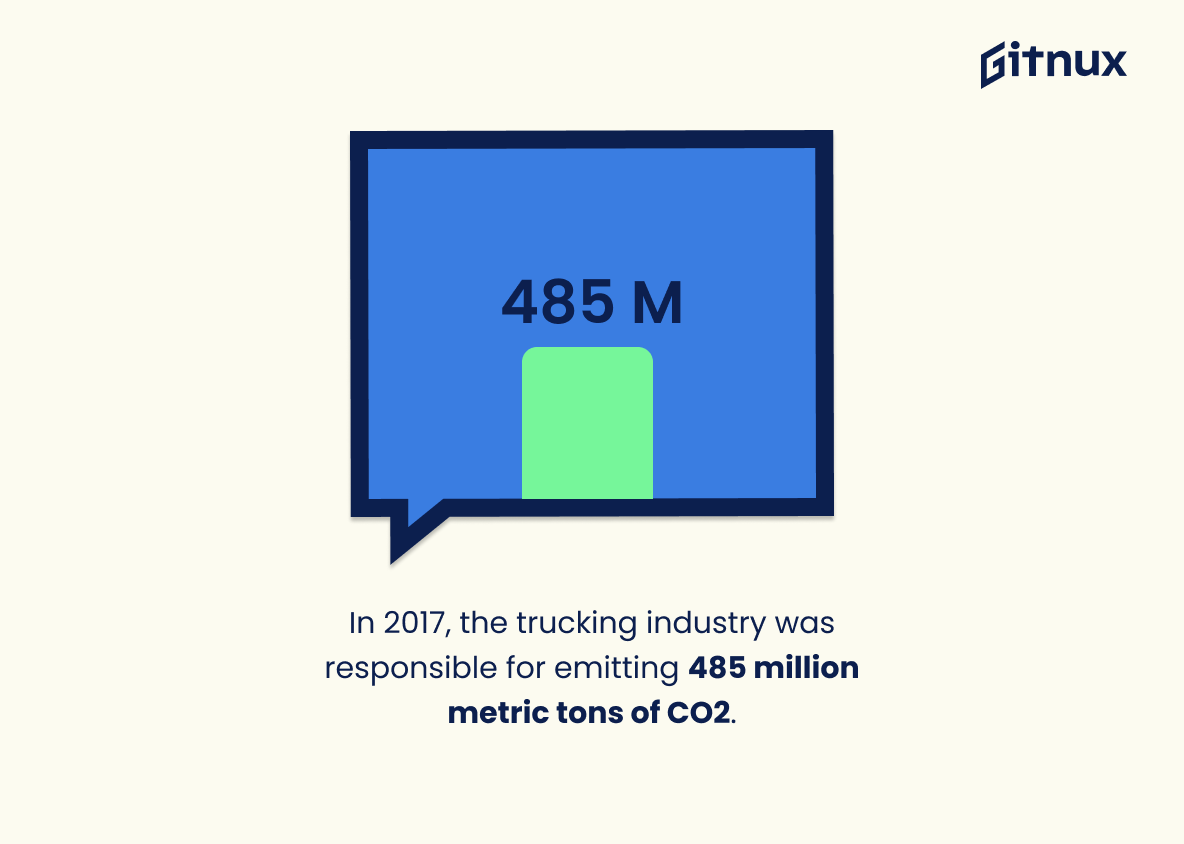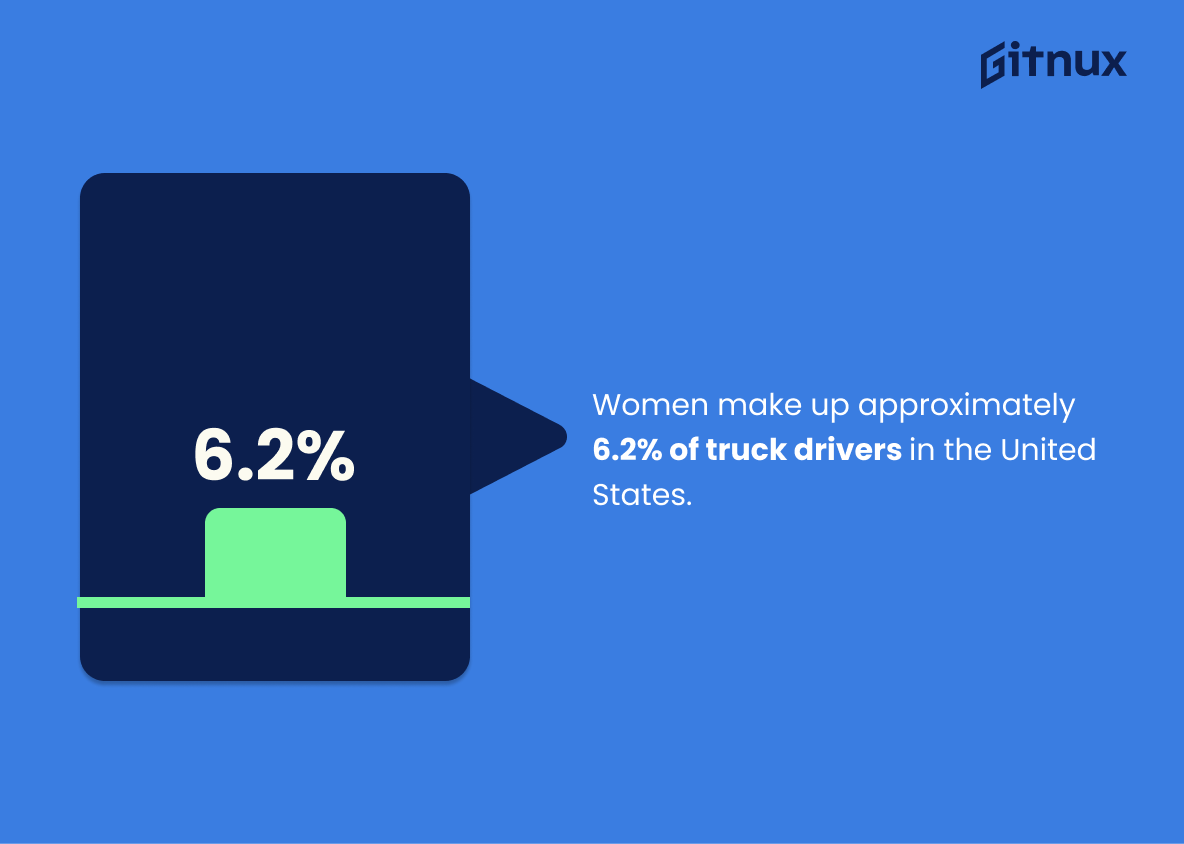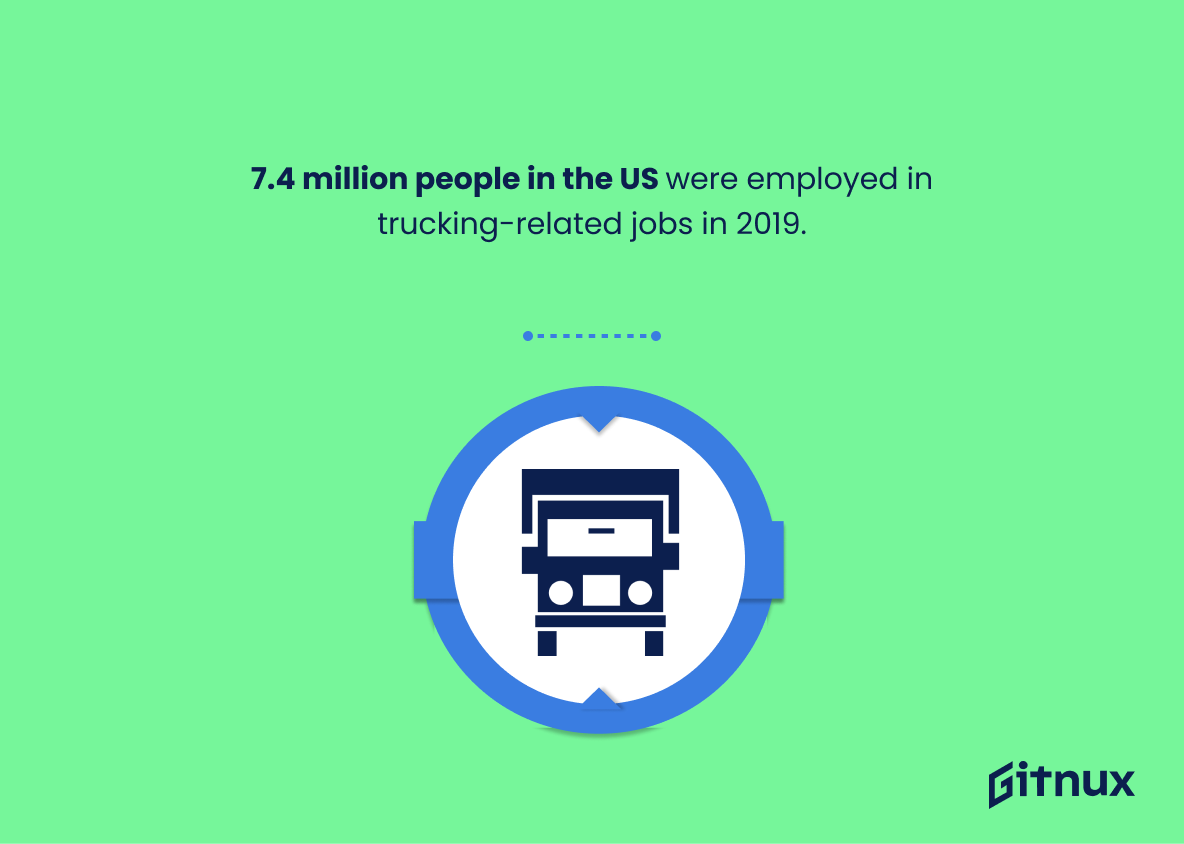The U.S. trucking industry is a major economic force, generating over $700 billion in annual revenue and moving 11.84 billion tons of freight each year. With more than 3.5 million professional truck drivers working across the country, trucks account for 71.4% of total freight value and are responsible for 68% of domestic freight movement in the US alone – 78% of American communities rely solely on them to deliver goods and services. There are about 1.2 million trucking companies operating within the United States, with 91% having six or fewer trucks under their ownership; these businesses consume 54.3 billion gallons of diesel fuel annually while paying out an average salary rate to its employees at $45,570 per annum – though 60 percent experience musculoskeletal pain due to long-haul driving conditions according to research conducted by The Bureau Of Labor Statistics (BLS). In addition, ATA estimates that there will be a driver shortage reaching 160 thousand by 2028 as well as Class 8 Truck sales hitting 278 465 units last year – not forgetting that transportation was also responsible for emitting 485 metric tonnes worth CO2 into our atmosphere between 2017-2018 which resulted in fatalities increasing almost one percent during this period too. Finally it’s important to note that 7 point 4 million people were employed within this sector back in 2019 with women making up 6 point 2 percent whilst 46 point 5 years old being considered ‘average’ age amongst all drivers involved.
U.S. Trucking Industry Statistics Overview
More than 3.5 million professional truck drivers work in the U.S.
This statistic is a powerful indicator of the size and scope of the U.S. trucking industry. It demonstrates the sheer number of individuals employed in the industry, and the importance of trucking to the U.S. economy. It also highlights the need for continued investment in the industry, in order to ensure that the industry remains competitive and efficient.
Trucks account for 71.4% of the total freight value in the US.
This statistic is a testament to the importance of the trucking industry in the US. It highlights the sheer volume of freight that is transported by trucks, and the significant contribution they make to the US economy. This statistic is a powerful reminder of the vital role that trucking plays in the US, and the need for continued investment in the industry.
The U.S. trucking industry is responsible for moving approximately 68% of domestic freight.
This statistic is a powerful indicator of the importance of the U.S. trucking industry in the transportation of goods. It highlights the fact that the trucking industry is a major player in the movement of goods across the country, and is a key component of the U.S. economy. This statistic is a reminder of the vital role that trucking plays in the nation’s supply chain, and the importance of the industry in keeping the country’s economy running smoothly.
78% of American communities rely solely on trucks for the delivery of goods and services.
This statistic is a telling indication of the importance of trucking in the United States. It highlights the fact that the majority of American communities rely on trucks for the delivery of goods and services, demonstrating the vital role that trucking plays in the country’s economy. This statistic is especially relevant to a blog post about U.S. Trucking Industry Statistics, as it provides a clear picture of the industry’s impact on the nation.
There are about 1.2 million trucking companies in the U.S.
This statistic is a powerful indicator of the size and scope of the U.S. trucking industry. It demonstrates the sheer number of companies that are involved in the industry, and the potential for growth and development within the sector. It also highlights the importance of the trucking industry to the U.S. economy, as it is a major contributor to the nation’s GDP. This statistic is an important piece of information for anyone looking to gain a better understanding of the U.S. trucking industry.
60.2% of long-haul drivers experience musculoskeletal pain.
This statistic is a stark reminder of the physical toll that long-haul drivers endure in the U.S. trucking industry. It highlights the need for better safety measures and improved working conditions for these drivers, who are essential to the functioning of the industry.
The average annual salary for a U.S. truck driver is $45,570.
This statistic is a telling indication of the value of truck drivers in the U.S. trucking industry. It highlights the importance of truck drivers in the industry, as well as the financial rewards they can expect to receive for their hard work. It also serves as a benchmark for other trucking industry professionals, providing an idea of the salary range they can expect to receive.
The American Trucking Association estimates the driver shortage to reach 160,000 by 2028.
This statistic is a stark reminder of the looming issue of the driver shortage in the U.S. trucking industry. With the current driver shortage estimated to reach 160,000 by 2028, it is clear that the industry is facing a major challenge that needs to be addressed. This statistic highlights the need for the industry to take proactive steps to address the driver shortage and ensure that the industry is able to meet the demands of the market.
The U.S. Trucking industry consumes around 54.3 billion gallons of diesel fuel annually.
This statistic is a powerful indicator of the sheer scale of the U.S. Trucking industry. It highlights the immense amount of diesel fuel consumed annually, demonstrating the industry’s reliance on this resource and its importance to the economy.
The trucki.ng industry paid $ 41.7 billion in federal and state highway-user taxes in 2018.
This statistic is a testament to the immense contribution of the trucking industry to the U.S. economy. It highlights the fact that the trucking industry is a major source of revenue for the federal and state governments, and that it is an integral part of the nation’s infrastructure. It also serves as a reminder of the importance of the trucking industry in keeping the country’s economy running smoothly.
Class 8 truck sales in the U.S. reached 278,465 units in 2019.
This statistic is a telling indicator of the strength of the U.S. trucking industry. It shows that despite economic uncertainty, the demand for Class 8 trucks remains strong, indicating that the industry is still thriving. This is an important statistic to consider when discussing the overall health of the U.S. trucking industry.
In 2017, the trucking industry was responsible for emitting 485 million metric tons of CO2.
This statistic is a stark reminder of the trucking industry’s contribution to global carbon emissions. It highlights the need for the industry to take steps to reduce its environmental impact and become more sustainable. It also serves as a call to action for policy makers to create regulations that incentivize the trucking industry to reduce its emissions.
Fatalities in large truck crashes increased by almost 1% between 2017 and 2018.
This statistic is a stark reminder of the dangers of the trucking industry, highlighting the need for increased safety measures and regulations. It is a sign that the industry is not immune to the risks of the road, and that more needs to be done to ensure the safety of truck drivers and other motorists. The increase in fatalities is a call to action for the U.S. trucking industry to take steps to reduce the number of fatal crashes and ensure the safety of everyone on the road.
Women make up approximately 6.2% of truck drivers in the United States.
This statistic is a stark reminder of the gender disparity in the trucking industry. It highlights the fact that women are significantly underrepresented in this field, and that there is a need for greater diversity and inclusion in the industry. This statistic is an important indicator of the need for more equitable opportunities for women in the trucking industry, and it should be taken into consideration when discussing the future of the industry.
7.4 million people in the US were employed in trucking-related jobs in 2019.
This statistic is a powerful indicator of the importance of the trucking industry in the US economy. It shows that trucking-related jobs are a major source of employment for millions of Americans, and that the industry is a major contributor to the nation’s economic growth. Furthermore, it highlights the need for continued investment in the trucking industry to ensure its continued success and growth.
Conclusion
The U.S. trucking industry is an integral part of the American economy, generating over $700 billion in annual revenue and moving 11.84 billion tons of freight each year. It employs more than 3.5 million professional drivers who are responsible for 71.4% of total freight value in the US and 68% of domestic freight movement respectively, while 78% of communities rely solely on trucks for delivery services across America’s infrastructure network alone – a testament to its importance as a vital service provider within our nation’s transportation system .
Moreover, there are 1.2 million trucking companies operating with six or fewer trucks that consume 54.3 billion gallons diesel fuel annually; paying out $41billion dollars in federal and state highway-user taxes during 2018 alone – all whilst facing increasing operational costs per mile at around $1:59 USD due to rising Class 8 sales (278,465 units) throughout 2019 alongside growing environmental concerns from CO2 emissions reaching 485 metric tonnes by 2017 which have since seen fatalities increase by almost 1%.
Despite this however, it remains one of the most rewarding professions available today with average salaries standing at approximately 45k USD yearly despite driver shortages estimated to reach 160 thousand personnel by 2028 – although only 6 percent being female according to BTS statistics released last year – yet still providing employment opportunities for 7million people nationwide regardless.
References
0. – https://www.statista.com
1. – https://www.afdc.energy.gov
2. – https://www.epa.gov
3. – https://www.trucks.com
4. – https://www.census.gov
5. – https://www.ttnews.com
6. – https://www.truckinfo.net
7. – https://www.bls.gov
8. – https://www.fmcsa.dot.gov
9. – https://www.trucking.org
10. – https://www.bts.dot.gov
